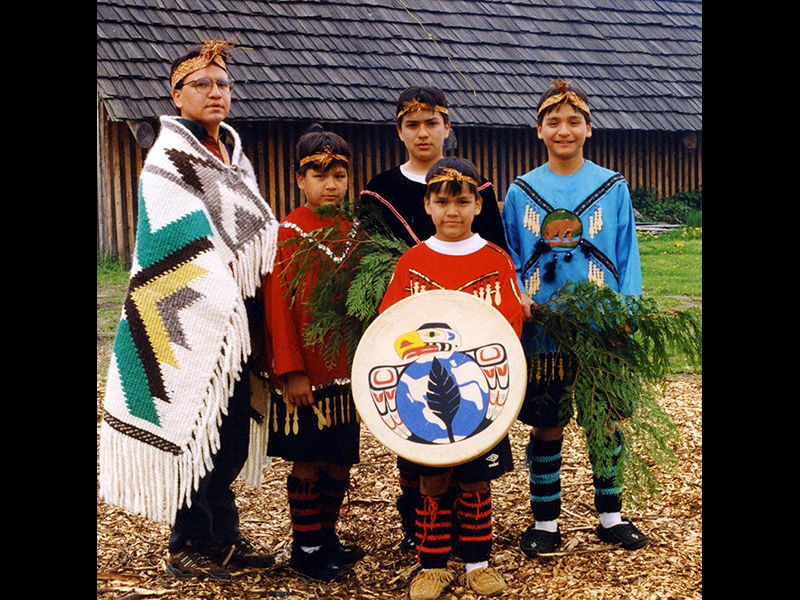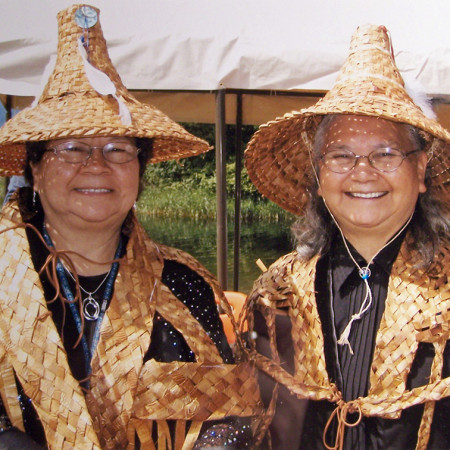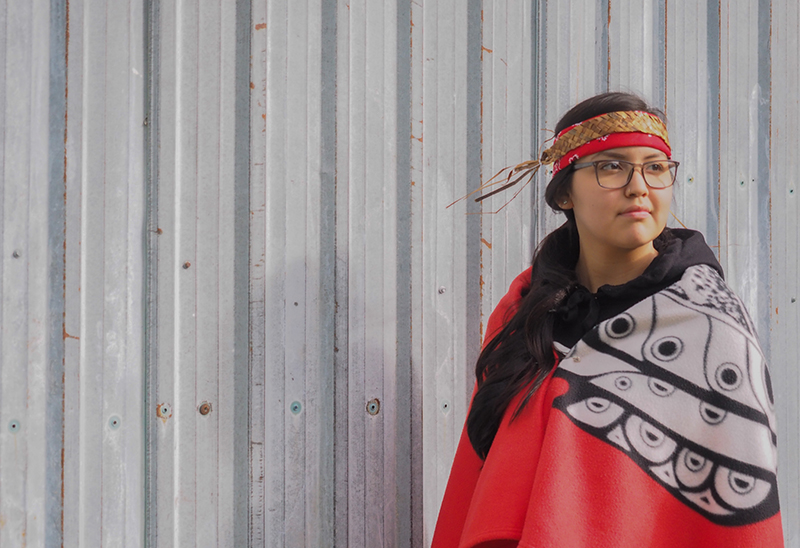Sts’ailes puberty camps make it okay to be an awkward teenager
By: Sophie Woodrooffe and Stefan Labbe

By: Sophie Woodrooffe and Stefan Labbe
Hailee Leon was 12 years old when she first went to puberty camp. Her parents split up that same year.
In the summer, they sent her to Natural Changes camp — four days when young women peel back the mystery of new hair, zits and bleeding to reveal one of the biggest changes in a young person’s life. For some girls, the camps also give them a chance to cope with puberty’s intense emotions.
“It reassured me that it’s okay to feel hurt and it’s okay to grieve when it’s needed, and that it’s okay to just have moments,” says Leon.
The four-day puberty camp is an intervention for young people — Natural Changes for girls, and Warrior camp for boys. Up to 30 kids between 11 and 16 attend the camps every summer at Sts’ailes, a reserve two-hours’ drive from Vancouver and tucked into the mountains of the Coast Range.
The camps blend health with culture, say elders. They learn traditional skills like cedar weaving and hunting to help them deal with the pressures and angst of puberty.
“Everything we did came with a teaching,” says Leon.
At first light, the girls run to a rushing creek for a spiritual bath, meant to wash away any negativity, like pubescent self-loathing and anxiety. During the day, they pick through the woods looking for medicinal plants with Halq’eméylem names passed down for generations.












Menstruation is a woman’s “power time,” according to Sts’ailes spiritual beliefs. Instead of talking about their period, they call it their moon — something that is sacred, and that should be respected.
“When on your period, the teaching that we got was to be careful and, you know, ground yourself and hold yourself together,” says Leon.
After her first time at Natural Changes, Leon still wasn’t sure how to do this. Camp leaders say that it often takes a couple years for the girls to understand the teachings.
“I thought I had to protect myself all the time,” says Leon, reflecting on the role that menstruation plays in the community’s spiritual beliefs.
“At school it’s different, but in the smokehouse, it’s really strict,” says Leon, referring to the longhouse’s special rules they learn at camp. “You have to be wrapped, and you can’t walk around when you have your period.”
During their moon, they are forbidden to prepare food, and can steal energy from sacred objects like drums and paddles by stepping over them.
The elders, who pass down these traditional teachings, are quick to admit they don’t have all the answers. This is where the nurses come in. They help the girls make sense of the raw biology of a changing teenage body.
“A lot of the girls want to know, ‘can I go swimming?'” says nurse Jasmine Frye. “A lot of them want to know the practical stuff.”
Practical and teenager don’t always go hand in hand — especially when it comes to sex.
“We know young people are growing and their hormones are really blasting,” says elder Virginia Peters, who is 74 and helped found the camps in the 1990s. She says the camp leaders try to caution youth that having casual sex can lead to early parenthood. But they’re not looking to scare the girls.

Peters says they use the camps to try and break down the stigmas that her generation learned in residential school — that sex was dirty and shouldn’t be talked about.
“A lot of them need to be de-programmed and realize how important our ways are, and how it can really complement what’s going on in the modern, western ways,” says Peters, referring to some of the descendants of residential school survivors.
But modern also means money. With $4,000 per summer from the provincial government, organizers try to keep costs down by hunting deer and gathering berries in the spring.
“We have to have a facility, we have to have the supplies, the equipment, transportation and all of those things that cost money,” says co-founder Nancy Charlie.
Many of the kids return to the camps, learning a little more each year. Leon stopped going after her parents broke up. She started skipping class and switched back and forth between Agassiz public school and the Sts’ailes reserve where she lives.

“It’s pretty weird crying at school, so just, why go?” she says.
At 14, Leon realized she was on the wrong path.
“I wanted to just be a kid again and hang out with some friends, and learn some more,” says Leon. “And not have so many responsibilities at once — because it was starting to build up and everything, and I didn’t know what to do.”
That summer, she went back to Natural Changes camp for a second time.
“It helped me knowing that everyone goes through it, just to never be scared,” says Leon. “You’ll always have someone to ask. You’ll always have a person to trust.”
Stefan Labbé is a journalist, islander and full-time questioner of everything. Follow him @StefanLabbe
Sophie Woodrooffe is a journalist based in Vancouver. Follow her on Twitter @dswdrff